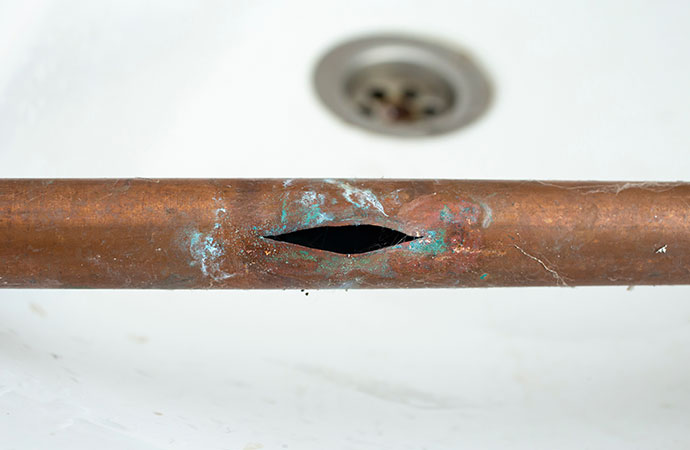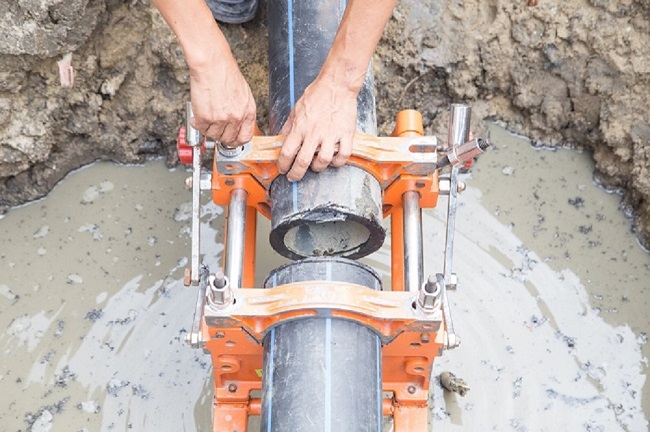Are you currently interested in insight concerning How to Shut off Your Water When Pipe’s Burst?

You have to recognize exactly how to turn off your primary water line if you struggle with a burst pipeline. Do not wait on a plumbing emergency before figuring out exactly how to get this done. Besides, besides emergency leakages, you will certainly need to switch off your main water shutoff for plumbing repair work or if you leave for a lengthy trip. Figure out more concerning it in this small overview.
Why Must You Close the Main Line Off?
Acquainting yourself with just how your mainline switches on and also off can conserve you during an emergency. For example, when a pipeline suddenly bursts in your home, you'll be besieged with panic. Thus, you can conveniently shut the shutoff off as well as avoid a lot more damage if you know what to do. Furthermore, shutting this off ensures you don't have to manage an unexpected flooding in your home.
In addition to that, shutting and opening up the shutoffs from time to time ensures they do not obtain stuck. It is additionally the best time for you to check for corrosion or various other busted connections. Furthermore, make it a point to inform various other member of the family on what to do. This makes routine upkeep and also taking care of emergency situations a lot less complicated. You can possibly conserve on your own countless dollars in repairs.
Where is This Primary Shutoff Situated?
The primary water line supply can vary, so you may require to discover time to determine where it is. Sadly, when your home is getting drenched as a result of a burst pipe, you do not have the high-end of time throughout an emergency. Thus, you should plan for this plumbing dilemma by finding out where the shutoff is located.
This shutoff valve might appear like a round valve (with a lever-type manage) or a gate shutoff (with a circle faucet). Positioning relies on the age of your residence as well as the environment in your area. Examine the complying with usual places:
- Inside of Home: In cooler climates, the city supply pipes face your house. Inspect usual utility areas like your basement, utility room, or garage. A most likely area is near the water heater. In the basement, this valve will certainly go to your eye degree. On the various other main floors, you may need to bend down to find it.
- Outdoors on the Exterior Wall surface: The major shutoff is outside the home in exotic environments where they don't experience wintertime. It is often attached to an exterior wall. Look for it near an exterior faucet.
- Outdoors by the Road: If you can not discover the shutoff anywhere else, it is time to inspect your street. It could be outside beside your water meter. It could be below the accessibility panel near the ground on your street. You may need a meter trick that's marketed in equipment stores to remove the panel cover. You can find two shutoffs, one for city usage and one for your home. Ensure you shut down the right one. As well as you will certainly recognize that you did when none of the taps in your home release freshwater.
Must This Constantly Be Shut down?
Other than emergencies, repair work, or long holidays, you might not require to switch off the major shutoff. As an example, so one component has problems, you can shut off the branch shutoff in that area. This way, you can still use water in other parts of your house. For ideal outcomes, call a trusted plumber for emergency situations.
Pipe Burst? Here's What to Do Next
There's nothing worse than that sinking feeling that sets in when you notice water dripping from your ceiling or — worse — gushing from a broken pipe. Many homeowners find themselves panicking as they start to tally up the water damage repair costs. Fortunately, a bit of forward planning can help you avert a total plumbing disaster.
What Happens When a Pipe Bursts?
There are several reasons that your pipes could burst, though one of the leading culprits is ice. When the temperature outside dips below freezing, the water in your pipes can freeze, too. When water freezes, it expands, putting significant pressure on your pipework.
When your pipes freeze for the first time, they may withstand the added pressure without any adverse effects. However, allowing your pipes to freeze repeatedly will gradually weaken them as they expand and contract, eventually causing them to burst or crack.
- Corrosion
- High water pressure
- Blockages
- Invading tree roots
How Do You Know If Your Pipes Have Burst?
When you mention broken pipes, most people imagine water gushing dramatically from the wall or ceiling. However, the first signs are often subtler. It's a good idea to look out for the less obvious symptoms of a major leak.
When a water pipe bursts, moisture starts seeping into your floors, ceilings and insulation, causing significant damage. Eventually, mold and mildew start to flourish, creating a potentially hazardous living environment. If you find yourself wading through puddles of water on the floor or can hear water bubbling inside the walls, you won't be left in any doubt as to whether you have a burst pipe.
Unexplained Hike in Water Bills
If your water bill suddenly shoots up for no apparent reason, it could be a sign of a burst water main. As water seeps out of the pipe, it sends your water usage sky high. Any unexpected increase in your water bills warrants further investigation.
Reduced Water Pressure
A broken water main or burst pipe means your system must work harder to maintain a supply to your faucets and other fixtures. Therefore, reduced or uneven water pressure could be a sign that you've got a leak. While there are a few potential causes of dodgy water pressure, it's important to find the reason quickly to prevent water damage.
No Flow
Reduced water pressure is inconvenient enough, but you may suddenly find that you have no water flow at all. One of the most likely reasons for a complete lack of running water is a frozen pipe. You should defrost your pipes as quickly as possible to stop them from bursting.
If you can access the frozen pipe, you could try defrosting it yourself. Turn on the central heating to around 70 degrees and use a gentle heat source like a hairdryer or infrared lamp to warm the pipe up gradually — never use a blowtorch or other open flame. If the pipe is inaccessible or your efforts aren’t fruitful, call a plumber to defrost the pipes for you.
Damp Patches in Your Home or Yard
As water flows out of a burst pipe, you may notice damp or discolored patches on your walls, floors or ceilings. If the leak happens under a tiled floor, it could make the tiles feel wobbly or unstable.
Don't forget to look for exterior signs of a burst pipe. Depending on the location, you may also see puddles, depressions or wobbly pavement in your yard.
https://www.homeserve.com/en-us/blog/home-improvement/frozen-pipe-burst/

I discovered that page on while doing research the search engines. Enjoyed reading our post? Please share it. Help somebody else discover it. We value reading our article about Steps to Take When a Pipe Bursts.
Hot water gone? Dial here.
Comments on “Understanding the Steps of Closing Your Main Water Line When Faced With a Burst Pipe”